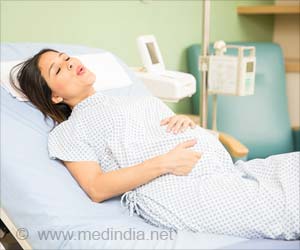Induced labour could lead to forceps delivery and hence caution should be exercised in doing so, warns an Australian researcher.
Doctors should not seek to induce labour in women who have no clinical indications for the procedure, says Dr Mary-Ann Davey of Mother and Child Health Research at La Trobe University.Her conclusion follows a major quantitative study of 50,000 first births between 2000 and 2005 which showed that induced labours were more likely than spontaneous births to lead to forceps delivery, caesarean section and haemorrhage.
Babies were also more likely to be admitted to nursery care and to require active resuscitation after induced labour.
Dr Davey stresses that the sample included only those women whose pregnancies were progressing in a healthy and normal manner. ‘I used data that are routinely collected on all births in Victoria by the midwife attending the birth,’ Dr Davey said.‘I selected those first births that appeared to have no clinical indication for induction of labour.
These were all single pregnancies of normal presentation born between 37 and 40 weeks with birthweights between the tenth and ninetieth percentile.
Mothers had no complications, such as pre-existing diabetes, hypertension, cardiac disease or mental illness and those younger than 20 years or older than 45 were excluded from the analysis.
Advertisement
Dr Davey suggests that induction of labour in uncomplicated pregnancies should only be undertaken after carefully weighing up the risks and benefits.
Advertisement
After adjustment for other important factors, the risk of haemorrhage following induced labour was increased by 17 per cent, of an instrumental delivery by 20-70 per cent, of nursery care for the infant by 24 per cent and active resuscitation by 15-100 per cent, depending on the method of induction.
The risk of a caesarean was between two and four times more likely after induction. She also found that women whose labour was induced were more likely to experience tearing of the perineum or episiotomy.
There was no evidence, she said, that the type of labour had any connection with the death of the mother or baby.
Source-Medindia
GPL/S










